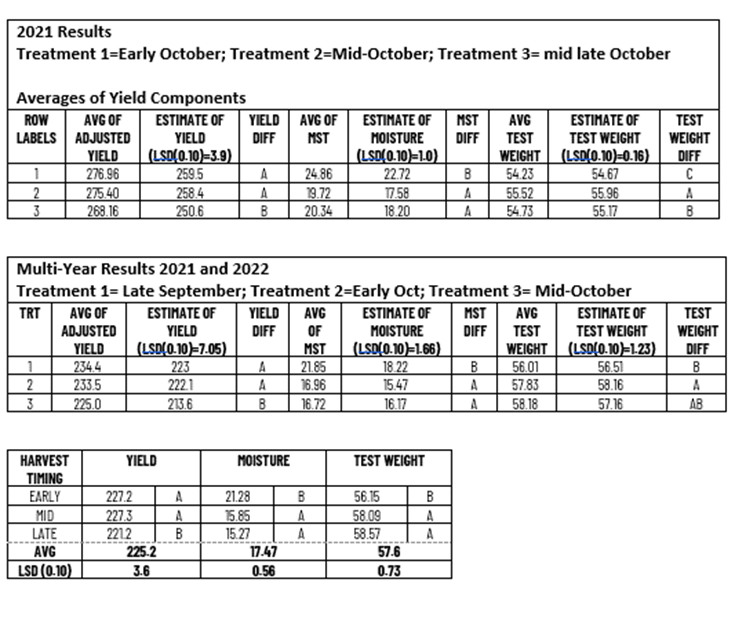2023 PAR (PRODUCT & AGRONOMY RESEARCH) REPORT: Harvest Timing of Corn and Phantom Yield Loss
BY Dairyland Seed Agronomy Team
Harvest Timing of Corn and Phantom Yield Loss – 2021, 2022, 2023
Description:
Dairyland Seed agronomists wanted to verify yield due to allowing corn to dry in the field as opposed to harvesting corn at a higher moisture. Studies from various sources have shown that optimum harvest moisture is 25%. Based on this information, there is continued interest in harvest moisture and timing and how that impacts yield.
Harvesting at a higher moisture has shown to reduce mechanical damage and loss. In addition to that mechanical loss, there exists some unexplained yield loss. The grain yield lost between an earlier harvest and allowing the corn to field dry is often referred to as “phantom yield loss”. Where is this loss? Some speculate harvest loss at the head or combine, lodging and natural processes that utilize carbohydrates until the plant is harvested.
Over the course of three years, we used several hybrids to gain a more general look at this subject. We would expect individual hybrids to show differences more or less than the aggregated data.

Discussion:
In the two-year comparison there exists a clear yield advantage for harvesting in late September to early October. In 2023 harvest was pushed later in the calendar basis but similar moistures to the previous two years. Each year we found a statistical difference in harvest timing. Of interest is the marked difference in 2021 and 2022 from early October to mid-October yields. The anomaly was 2023 and an actual increase in yield as we moved later in the season. An agronomic reason may be hard to determine. One possibility was there still a certain amount of carbohydrate transfer at those high 20% to 30% moisture levels. If we however look at the research in its entirety over years, hybrids and replications data would support the advantage to earlier harvest.
Conclusion:
The three-year summary shows a statistical advantage for harvest beginning in late September to early October. For those wanting to wait and field dry even more, our research may suggest the ideal time to be the early October time frame. At that timing, we peaked out on moisture loss and yield loss is limited. The 2021-22 multi-year data would say we were seeing a 10-bushel advantage for early harvest. Factoring in the 2023 data reduces that to 6 bushel.

Brian Weller
Western Region
507.456.3034

Rod Moran
Western Region
507.456.3034

Dan Ritter
Central Region
219.863.0583

Branden Furseth
Northern Region
608.513.4265

Mark Gibson
Eastern Region
260.330.8968

Amanda Goffnett
Eastern Region
989.400.3793

Ryan Mueller
Eastern Region
989.400.3793
